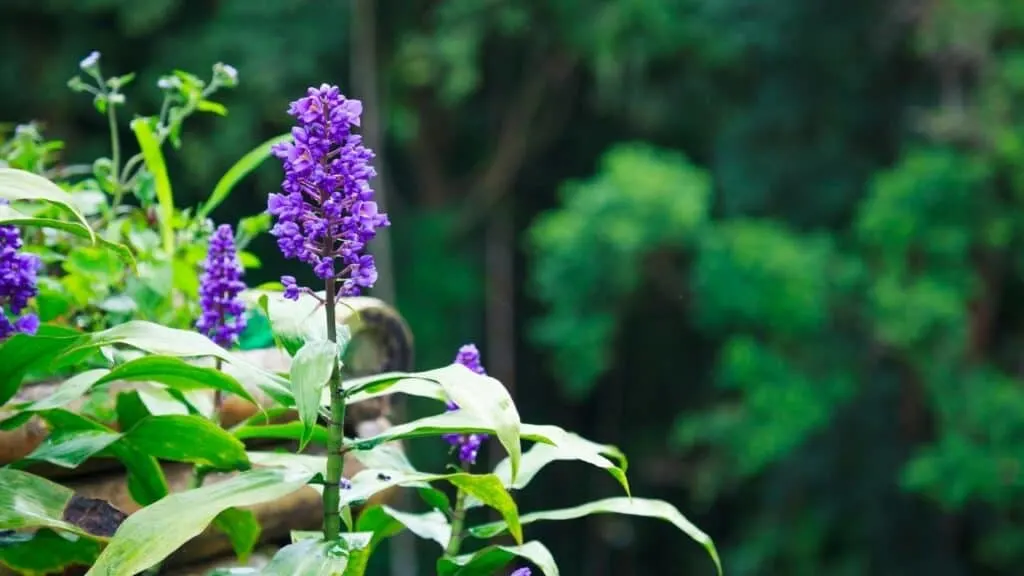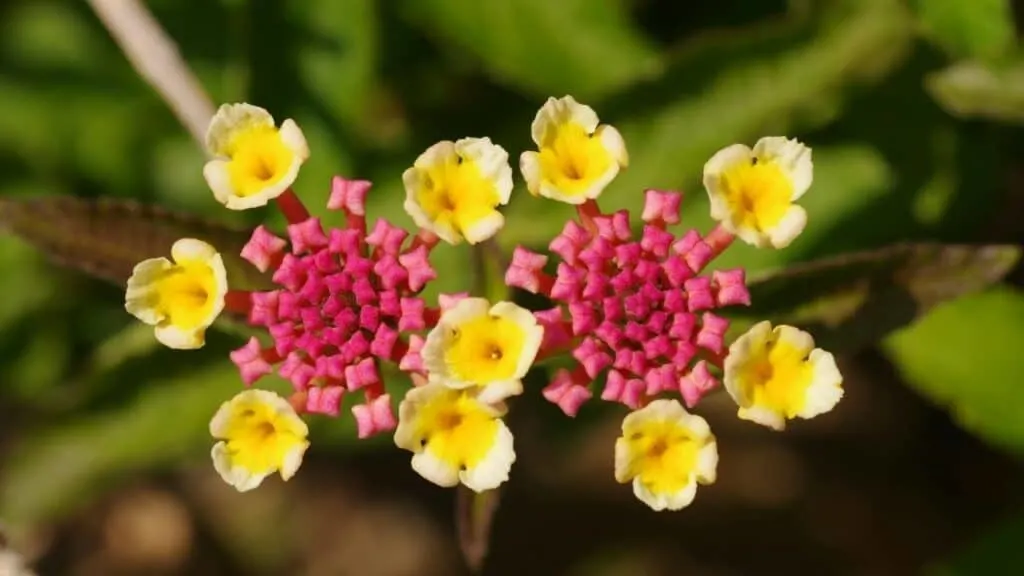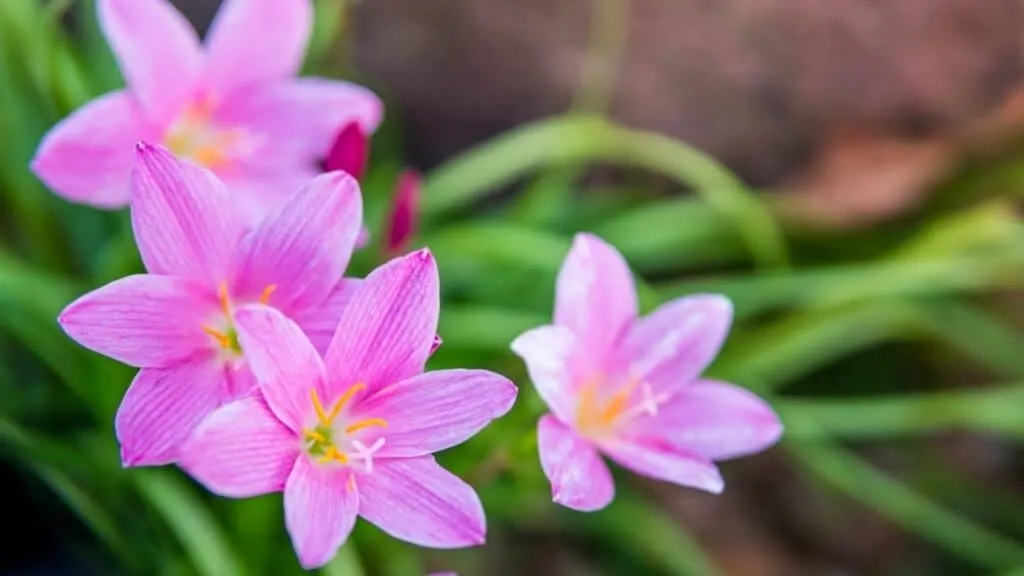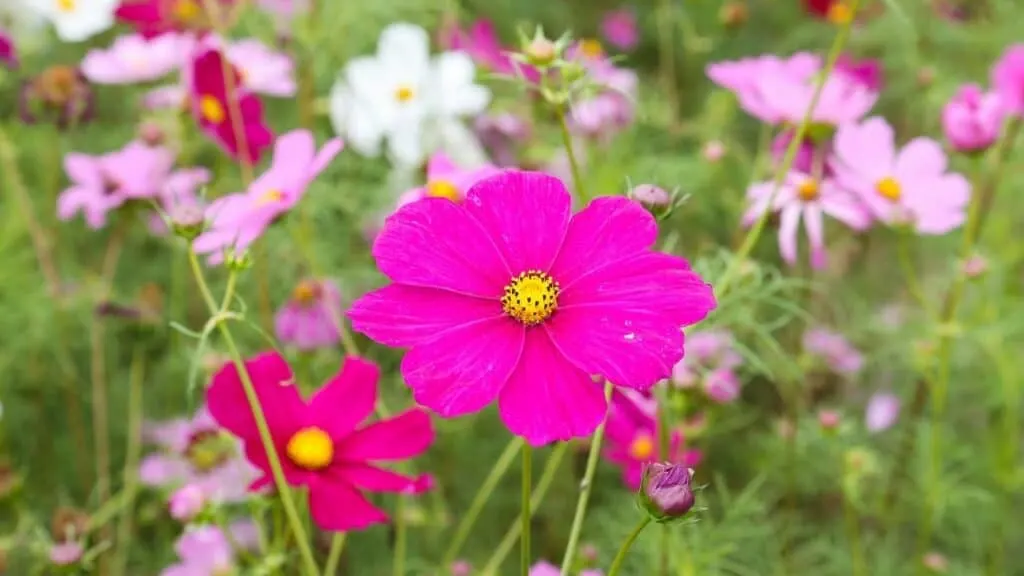Crepe myrtle trees put on a stunning show of pink flowers that have a glorious soft wrinkled texture, much like crepe paper.
It also has attractive bark and in the fall, the leaves turn to stunning shades of orange, red, and yellow.
This is a classic southern favorite and a must-have for any gardener wanting to create a focal point in your outdoor living space.
The beautiful pink tones of the blooms pair perfectly with plants that either contrast or match them in color.
Let’s take a closer look at some plants that are ideal to plant under a crepe myrtle tree.
Table of Contents
What to plant under crepe myrtle trees?
Adding a burst of color under your crepe myrtle tree adds to the joy of your garden. There are many flowering plants that enjoy part shade and add interest by attracting birds and butterflies. Some great choices are Rose of Sharon, Creeping lilyturf, Lantana, Hibiscus, Rain lily, and Coreopsis.
1. Rose of Sharon (Hibiscus syriacus)
The Rose of Sharon bush perfectly compliments a crepe myrtle tree.
It offers long-lasting color in summer into fall, with flowers in tones of red, pink, purple, and white. The flowers are very showy and are attractive to bees, butterflies, and birds.
The plant grows as a perennial bush and can spread fairly fast, filling up the bare space under a tree.
Being tolerant of part shade, this is a great choice to plant in a flower bed under your crepe myrtle tree.
Rose of Sharon enjoys well-draining, medium-moisture soil. It is hardy and requires very little maintenance. It is tolerant of drought, heat, humidity, and urban conditions.
If you prune it back in winter, you will be rewarded with larger flowers in the summer season.
2. Creeping lilyturf (Liriope spicata)

The roots of your crepe myrtle tree are very shallow. When planting under the tree, you need to ensure that the plants do not have deep roots that will interfere with the tree.
Creeping lilyturf is an easy-to-grow ornamental ground cover that pairs well with a crepe myrtle tree.
The name Liliope is a nymph in Roman mythology and derives from a Latin word.
It offers attractive strap-like dark green leaves that turn to bronze in winter. The flowers have a spear shape and bloom in shades of pale violet to white.
Lilyturf is very tolerant of heat, shade, drought, and salty coastal conditions. It requires very little maintenance.
You may want to trim it back from time to time if it is growing too fast or looking untidy.
3. Lantana
Lantana can thrive in partial shade, making it a great choice to plant under your crepe myrtle tree.
It can also tolerate sun, so if your tree is very tall and not very shady, you will also have success with this colorful shrub.
Lantana offers summer-long blooms that stand out in a garden. There are many varieties with flowers that bloom in shades of white, yellow, orange, red, and purple. Leaves are a contrasting dark green.
Lantana enjoys moist, well-draining soil that is slightly acidic. It is tolerant of most soil types including poor soils.
There are two varieties that I love. Lantana camara bigleaf has yellow, pink, and light violet blooms. Lantana camara citrus really adds a burst of color with densely packed stunning yellow-orange flowers.
Lantana attracts butterflies and hummingbirds, bringing sound and movement into your garden.
4. Hibiscus
Hibiscus plants come in hundreds of varieties and make an attractive choice to compliment your crepe myrtle tree.
The flowers are large, trumpet-shaped, and bloom from mid-summer into fall.
Choose the lovely Hibiscus Rose Mallow ‘Airbrush Effect’. It offers stunning vibrant pink flowers with a dark red eye and a white halo. Each flower lasts only a day!
I also spotted a glorious Hibiscus Berry Awesome that has deep lavender-pink flowers. This will look fabulous with the pink tones of the crepe myrtle tree.
Hibiscus is happy in part shade and will flourish under a crepe myrtle tree. It prefers average, well-draining, medium-moisture soil.
This plant requires low maintenance. If you do enjoy tending to your garden, cut it down in spring before the new growth appears.
You can feed them lightly once in the spring, but this is not vital.
5. Rain Lily (Zephyranthes grandiflora)

Adding to the pink tones of the crepe myrtle tree, rain lilies are another fabulous choice to plant underneath your tree.
They enjoy sun or part shade and look best when planted in groups of five or more. It enjoys moderately fertile, moist, well-draining soil.
Rain lilies offer large flowers that are pink with a white throat and golden anthers. The flowers open at midday and close up in the afternoon. Leaves are strap-shaped and mid-green.
This plant blooms from mid to late summer, putting on a spectacular show.
Water weekly to encourage flowering during the summer season.
If you live in cold climates, you may have to dig up your bulbs and store them in a warmer indoor space for the winter.
6. Coreopsis

Another lovely flowering shrub that I recommend for planting under a crepe myrtle tree is Coreopsis moonlight.
It can tolerate sun and enjoys shade, especially in very hot summer climates.
Your crepe myrtle tree will give it just the correct amount of sun protection that it needs to flourish.
Coreopsis moonlight blooms for 3 to 4 months from early summer into fall. It offers delightful pale-yellow daisy-like flowers on a small bush.
The flowers are profuse, often with more than 150 per plant. The flowers do not fade in the heat and always look fresh.
Foliage is dark green with an interesting thread-like shape.
This plant does best in dry to medium-moisture well-draining soil. It is unfussy and easy to grow. Gardeners love this plant as it is drought tolerant and can thrive in poor soil.
If you enjoy having birds and butterflies flitting around in your garden, Coreopsis moonlight attracts them in abundance!
They also make wonderful cut flowers to brighten up your indoor space.
Get creative with a stone table and benches
Setting up a special get-away spot under your crepe myrtle tree will add a unique touch to your garden. It will be cool but not overly damp and moist.
Choose a small stone table and 2 benches for a romantic setting. Stone perfectly compliments a garden setting.
Decorate your table with a container filled with lovely Blanket Flower (Gallardia). The red, yellow, orange, or peach flowers pair perfectly with your tree.

Daniel has been a plant enthusiast for over 20 years. He owns hundreds of houseplants and prepares for the chili growing seasons yearly with great anticipation. His favorite plants are plant species in the Araceae family, such as Monstera, Philodendron, and Anthurium. He also loves gardening and is growing hot peppers, tomatoes, and many more vegetables.


